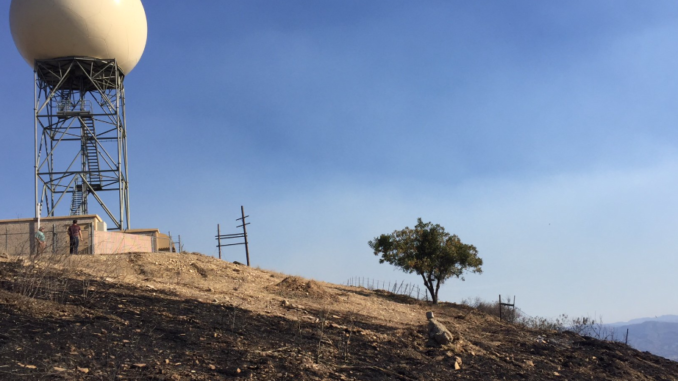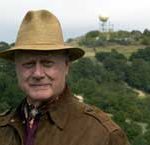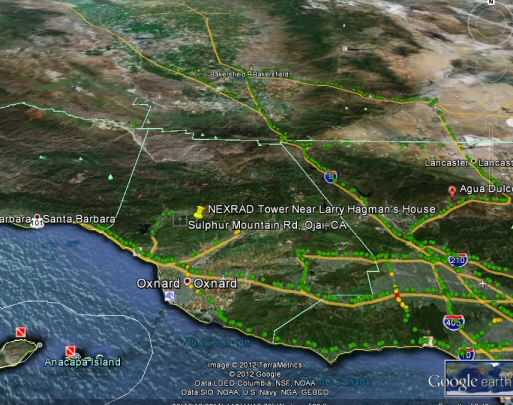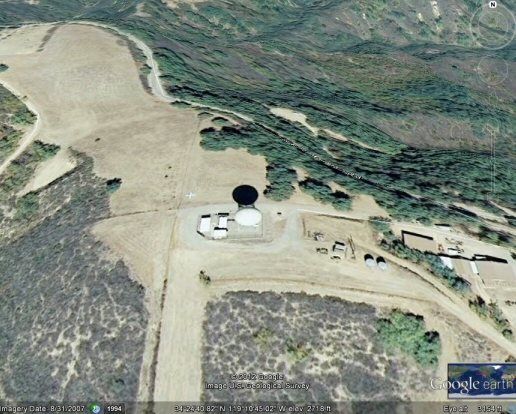
I was working at Unisys in the early nineties when the cold war ended and the “Ill Wind” scandal hit at the same time, causing Unisys to shed jobs at its Great Neck, Long Island facility in massive numbers. In three years, the number of employees at the location went from 6,000 to under 1,000, and eventually down to about 350.
In the midst of that depressing chaos, lots of really good engineers got laid off; one of them was one of the best engineers I ever worked with, a design engineer named Lou F. Because he was held in such high regard, Lou was offered a job as a field engineer, and in order to support his family, he took it although it meant non-stop traveling — weeks and months at a time at locations across the United States. The life of a field engineer was a notoriously lonely job; word had it that many became alcoholics — in most towns there was nothing to do but hit a bar after work. If anything it was a good job if you were just starting out in your twenties but not if you had a family. Lou was in his late forties or early fifties with his kids in high school or junior high and after a year, he told me the traveling was killing him but he had to do it to support his family — there were not many engineering jobs to go around in the early nineties. His vacations became his opportunities to be home with his family. He treasured his long weekends.
Lou’s job was helping to install NEXRAD radar towers. Thanksgiving weekend, 1993 Lou gets a special order from the company — a NEXRAD tower HAS TO go up that weekend in the mountains of California. This means Lou loses his Thanksgiving weekend to be with his family! You can imagine how pissed off he was. But you gotta do what the company tells you to do so Lou spends the entire weekend putting up this tower. They got the job done on time in record time; three days. Amazing.
All of that was from Lou. The rest of this story is from Lou and other engineers who were involved with the project. Word has it Monday morning after Thanksgiving Larry Hagman wakes up or arrives at his multi-million-dollar palatial estate on a hill in the Pacific Pallisades and sees a HUGE NEXRAD tower almost virtually in his backyard! NEXRAD towers that use Doppler technology to measure the velocity of raindrops to determine if a tornado is forming two hours before it actually forms, and give really good weather forecasting as well; state of the art for the early nineties, but also radars that many communities were afraid of because the electromagnetic emissions could be damaging or cause cancer for those located nearby, not to mention it absolutely RUINED Larry Hagman’s view of the Pacific Pallisades.
If you’ve never seen a NEXRAD tower, it is about 50 feet high — a tower with what looks like a HUGE white soccer ball at the top; that’s the radome within which is located the transmitter and receiver dish; the radome protects them from the elements and make the tower quite appealing to soccer and golf fans.
And so then came the community opposition, led by Larry Hagman, and lawsuits and claims that the tower caused the indigenous California Condor, which was a protected species, to not fly into the area as it normally would. In an attempt to appease Larry and the community, the National Weather Service promised to make the tower blend into the mountaintop, and had the tower painted green to match its surroundings. But the surroundings were mostly brown so now Larry had a big tower with what looked like a big GREEN soccer ball in his backyard, amidst a brown background.

I cannot find anything on the internet to verify that last bit of information, and certainly the picture at the left makes it arguable; I haven’t seen or talked to Lou F since I left Unisys in 1994 and I can’t find him on Facebook. Anycase that’s my Larry Hagman story; the rest of the story you can find on line in newstories such as this one:http://www.ojaivalleynews.com/issues2003/05-May2003/05-02-03/05-02-03photostory.html. Just in case the article disappears, we reproduce it below, and below that, some Google Earth images of the tower.
From the Ojai Valley News, 2003:
NEXRAD tower issue resurfacesBy Jesse Phelps Part I of a two-part review of where we stand with the Sulphur Mountain weather tower The National Academy of Sciences is undertaking a study on the NEXRAD flood warning tower on Sulphur Mountain Road, according to United States Senator Barbara Boxer of California. The study should help confirm whether the tower is adequately performing the function for which it’s intended: early prediction of weather patterns and, particularly, warnings for flash floods in Ventura County and the Los Angeles Basin. The tower, which appeared suddenly on the horizon atop Suphur Mountain during the four-day Thanksgiving holiday weekend of 1993, has been the target of questions and controversy for nearly a decade. Local residents have complained that the microwave pulse, emitted several times an hour by the tower, presents dangers to the health of those Upper Ojai residents living in close proximity. In addition, the tower, which officials of the National Weather Service claimed would blend in with the natural landscape, sticks out like a bee-stung albino thumb upon the otherwise pristine mountaintop. Many residents living in the area when the tower first appeared have now moved and, for a time, housing values in the area dropped considerably, according to nearby homeonwers. Others still living on Sulphur Mountain report high incidents of cancer and other maladies. Though they cannot be directly linked to the tower, these incidents have increased suspicion of the tower’s viability as a harmless, indeed, helpful addition to the region. The latest issue is whether the tower even does its job. “Concerns have been raised that the NEXRAD is not effective in providing sufficient warnings,” said Boxer, in an April 7 letter to National Academy of Sciences president Bruce Alberts. “Although the General Accounting Office studied the performance of the Sulphur Mountain radar in 1998, concerns have been raised that the study contained conflicting evidence, and the conclusions did not always appear to match the data,” Boxer wrote. “As you conduct this study, I hope that you will specifically examine the warning failure rate and radar data gap.” Boxer’s concerns were echoed by Sulphur Mountain resident Larry Hagman, who at one point offered to foot the bill (in excess of $3,000,000) to move the tower to a new location where it might perform better and with less potential danger to local residents. “It’s been missing between half and three-quarters (of the events),” said Hagman. “It’s in the wrong position, and it has been the whole time. It doesn’t pick up the storms under 6,000 feet, as it’s designed to, because it’s too high.” Hagman said that he continues to be embroiled in a battle with the weather service, which continues to deny any problems. “We finally got anough proof for Sen. Boxer to ask for mney to do a survey on it,” he said. “And we got it, after six years.” “It was not working so well that the Weather Service asked for another doppler radar to be put down in Anaheim. That one is quite good and it covers the basin,” he said. Hagman, whose property sits no more than a half-mile from the radar tower, says the survey will receive funding of “up to a half-million dollars.” He hopes it can be completed within about a six-month window. In Wednesday’s edition of the Ojai Valley News, we will explore specific data on the tower’s efficiency and find out where residents are prepared to go from here, should the study find the tower to be effective. © 2003 The Ojai Valley News |





Be the first to comment